|
|
1920s Transit Posters
|
|
1920s Transit Posters
During the 1920s, the Chicago Rapid Transit Company commissioned the city's finest graphic artists to produce advertising posters that encouraged Chicagoans to use rapid transit for more than commuting to work. The images produced beckoned Chicagoans to the city's parks, museums and other urban spots, as well as to more bucolic destinations beyond the city limits. Curiously, almost none of the posters actually featured the "L" itself, only scenic views of the destinations. Although there seem to be no records of precisely how many posters were produced, what they advertised, and what images they consisted of, researchers think approximately 160 posters were produced for the Insull lines between 1921 and 1929.
To check out some of these and other vintage Chicago railroad posters -- both reproduction and authentic -- check out Poster Plus.
For an excellent overview of the whole series of posters, not only for the rapid transit but for the other Chicago area Insull electric railways as well, see the article "A True Visionary Gives Chicago A Landmark Branding Campaign Circa 1920-30" by J.J. Sedelmaier in Print magazine.
Below is a sampling of the posters created for the "L" lines. To see a larger view of a poster, click on the poster's title.
Rocco D. Navigato In this image, Navigato
depicted North Michigan Avenue, which was
apparently dubbed "Boul Mich" in the
1920. Rocco D. Navigato Navigato presents Wacker
Drive in a similar manner as his earlier "Boul
Mich" poster. Arthur A. Johnson Johnson depicted the North
Side beaches in this sunny image. Larger posters,
like this one, were printed in two pieces and
pasted together. There is an upper portion of this
poster that is missing. The poster dates from circa
1924. Oscar Rabe Hanson Hanson depicted the gothic
charms of the University of Chicago's campus. This
poster is also missing its upper half. "University
of Illinois School of Medicine" by the Elevated
Lines Oscar Rabe Hanson Hanson's view of the
University of Illinois's Near West Side medical
school in snowy winter sets it apart from the other
city images, which usually depict warm weather
scenes. Oscar Rabe Hanson Hanson's view of Northwestern
University's Near North Side campus. Rocco D. Navigato The steeple of the Chicago
Temple, a combination church/office building,
soared above its Loop neighbors in Rocco D.
Navigato's design. Oscar Rabe Hanson Oscar Rabe Hanson highlighted
the neogothic architecture of the city's
churches. Willard Fredrick
Elmes Elms portrayed one of the
city's most well-known and beloved symbols: an Art
Institute lion. Urgelles This serene poster encouraged
urbanites to visit the city's parks. Rocco D. Navigato Navigato presented Washington
Park's lily pad lagoon in this 1923
design. Arthur A. Johnson By the 1920s, the German
Building, originally the German pavilion at the
1893 World's Columbian Exposition, was a popular
Jackson Park restaurant. It was destroyed by fire
in 1925. Arthur A. Johnson "Avoid Street
Congestion" was the only poster that actually
depicted the "L" itself. The posters made in this
program for the elevated, North Shore Line, and
South Shore Line rarely showed the trains of the
carriers, except on a few posters. The version of
the poster shown here is a reprint done for the
Loop Centennial and Chicago Transit Authority by
Poster
Plus. The original,
of course, did not mention the
CTA®;
The bottom originally read "Rapid Transit Lines,
Fast...Reliable". Ervine Metzl This poster, designed in
1923, depicts the Grosse Point Lighthouse in
northern Evanston, a landmark in the north Chicago
suburb. Datus Myers This poster, designed circa
1924, shows a couple canoeing in one of Jackson
Park's lagoon, with a bridge to the Wooded Island
overhead. The Wooded Island is a remnant of the
1893 Columbian Exposition, held in the
park. Ervine Metzl Several different
advertisements -- some large-scale posters, some
smaller prints -- were designed to advertise the
Field Museum. This one, designed circa 1924,
depicts a colorful toucan, promoting the museum's
wildlife exhibits. Oscar Rabe Hanson This Field Museum poster,
dating from circa 1925, shows a python, promoting
the museum's wildlife exhibits. Oscar Rabe Hanson The Field Museum also
advertised its anthropological and cultural
exhibits. This poster, designed circa 1925, depicts
African Jewelry. Oscar Rabe Hanson This circa 1925-vintage
advertisement for the Field Museum shows a Chinese
Censer, one of the museum's many anthropological
and cultural exhibits. Roy Thompson, for the
Research Class American Academy of Art
Chicago This advertisement for the
Field Museum depicts a crane looking down on a
child in a wagon with a doll. Measuring 12" x 9",
this was one of the smaller prints made to
advertise the museum and "L". This poster was
supposed to be published to put in the Chicago
School system to encourage the kids to go to the
museum; it is unclear if it was ever so used. It
may have also been posted inside railcars. The
image shows the original pencil outline and the
finished watercolor artwork. Lawrence E. Waters, for the
Research Class American Academy of Art
Chicago Another of the smaller 12" x
9" 4-color prints, this advertisement shows an
elephant and a monkey with children watching, along
with monkeys in the border near the top and
penguins in the border at the bottom. This poster
was supposed to be published to put in the Chicago
School system to encourage the kids to go to the
museum; it is unclear if it was ever so used. It
may have also been posted inside railcars. The
image shows the original pencil outline and the
finished watercolor artwork. "The
Peristyle North End of Grant Park" by the Elevated
Lines Ervine Metzl Metzl represented the
Peristyle, a Classical colonnade at the north end
of Grant Park at Michigan and Randolph built in
1917, in this 1921 poster. The original Peristyle,
a distinctive lakefront attraction, was demolished
in 1953, but a replica was built in the same
general location was part of the Millennium Park
improvements in 1998-2004. Oscar Rabe Hanson This poster, dating from
circa 1924, advertises the rapid transit's service
to the Chicago Civic Opera, the predecessor to
today's Chicago Lyric Opera. The poster depicts an
opera performance, with a knight in front of an
Egyptian monument. Oscar Rabe Hanson The Logan Square Monument, a
classical pillar topped by a majestic eagle, was
depicted by Hanson in this 1923 poster. The
monument was located in its namesake square, at the
intersection of Kedzie, Milwaukee, and Logan Blvd.,
at the end of the Northwest branch of the
Metropolitan Division. "Fountain
of the Great Lakes Grant Park" by the Elevated
Lines Arthur A. Johnson Johnson depicted the Fountain
of the Great Lakes, a fountain sculpture in Grant
Park, in this 1924 poster. The Fountain of the Great Lakes", a bronze work of art created between 1907-1913, was created by famed scultor Lorado Taft in response to Daniel Burnham's complaint at the Columbian Exposition in 1893 that the sculptors charged with ornamenting the fairgrounds failed to produce anything that represented the great natural resources of the west, especially the Great Lakes. The fountain depicts five women arranged so that the water flows through them in the same way water passes through the Great Lakes.

![]()
![]()
![]()

![]()
![]()
![]()

![]()
![]()
![]()
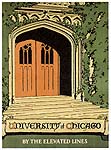
![]()
![]()
![]()

![]()
![]()
![]()

![]()
![]()
![]()

![]()
![]()
![]()

![]()
![]()
![]()

![]()
![]()
![]()

![]()
![]()
![]()

![]()
![]()
![]()

![]()
![]()
![]()

![]()
![]()
![]()
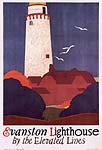
![]()
![]()
![]()

![]()
![]()
![]()
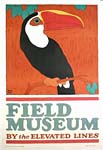
![]()
![]()
![]()
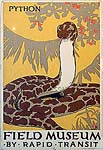
![]()
![]()
![]()
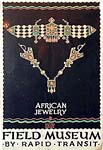
![]()
![]()
![]()
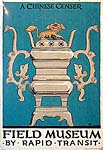
![]()
![]()
![]()
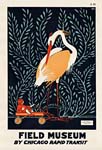
![]()
![]()
![]()

![]()
![]()
![]()
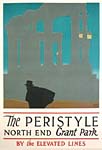
![]()
![]()
![]()

![]()
![]()
![]()

![]()
![]()
![]()

![]()
![]()
![]()
|
|
Thanks for J.J. Sedelmaier, Josh Gartler, and David Gartler for providing information for some of the above descriptions.